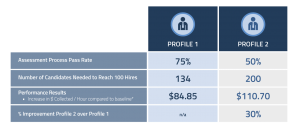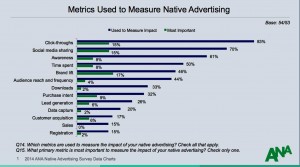With a vast majority of our lives centered around mobile devices, there is no time to play the waiting game. The “need for speed” is of utmost importance for sites to remain competitive, relevant and maximize reader engagement. Consumers get frustrated by webpage load times and often abandon ship before the page even loaded. There are many factors that can slow down a website including too many/heavy graphics and pages that are not optimized for different types of browsers. While it might be perceived as attractive to have a lot of images on a homepage, they can often significantly slow down the load time of a website.
Research has shown that any delay longer than a second will cause the user to interrupt their flow of thought, creating a poor experience. Mobile sites’ goals must include keeping the user engaged with the page and deliver the optimal experience, regardless of device or type of network.
A study by Gomez.com showed that visitors leave sites in much higher numbers when pages take longer to load. Today’s Web users expect pages to load within a few short seconds. The “need for speed” and fluid performance has been determined by the measurement of the behavior of millions of Web users. As the larger mobile publishers start building sites that are faster and faster, users will start holding all sites we visit to that standard.
A widely referenced study by Aberdeen Group found that, “A 1-second delay in page load time equals 11% fewer page views, a 16% decrease in customer satisfaction, and 7% loss in conversions.” That study dates back to 2008; today 57% of consumers will abandon a website if the page does not load within 3 seconds and 80% of these people will not return. These findings clearly indicate that user expectations of fast loading time have risen and show no intention of slowing down.
It’s no small secret that time is money, therefore, the more time consumers spend waiting for a page to load the less money there is to be made. Page loading time affects ranking; the faster loading time is, the higher traffic on the page. 51% of online shoppers in the U.S claimed if a site is too slow they will not complete a purchase; 75% of consumers are willing to visit competitor sites instead of dealing with a slow loading page, according to a Radware Case Study. Kissmetrics echoes this sentiment in their recent overview of How Loading Time Affects your Bottom Line, by concluding, “If an e-commerce site is making $ 100,000 a day, a 1-second page delay could potentially cost you $ 2.5million in lost sales every year.”
These days we are witnessing just about every internet giant trying to resolve those issues, keeping mobile users on their site and deeply engaged. The most prominent examples of market leaders trying to resolve mobile performance issues are Facebook‘s Instant Articles, Apple’s News app and most recently Google’s AMP project. While all of these solutions are clearly coming up with a creative solution for page speed, each one carries a very prominent caveat- the loss of brand control, by hosting publishers’ content outside of their own mobile properties. On the other hand, it means one thing- the mobile Web is speeding up and publishers need to keep up with the game.
So, what is the bottom line? Seconds do matter in this very competitive game. Maximizing reader engagement, page view and rank, consumer satisfaction and retention are all factors dependent upon seconds. Yes, those base units of time determine who wins and who loses the mobile game. Do you have a need for speed?
This article was previously published here.
Business & Finance Articles on Business 2 Community(40)
Report Post







